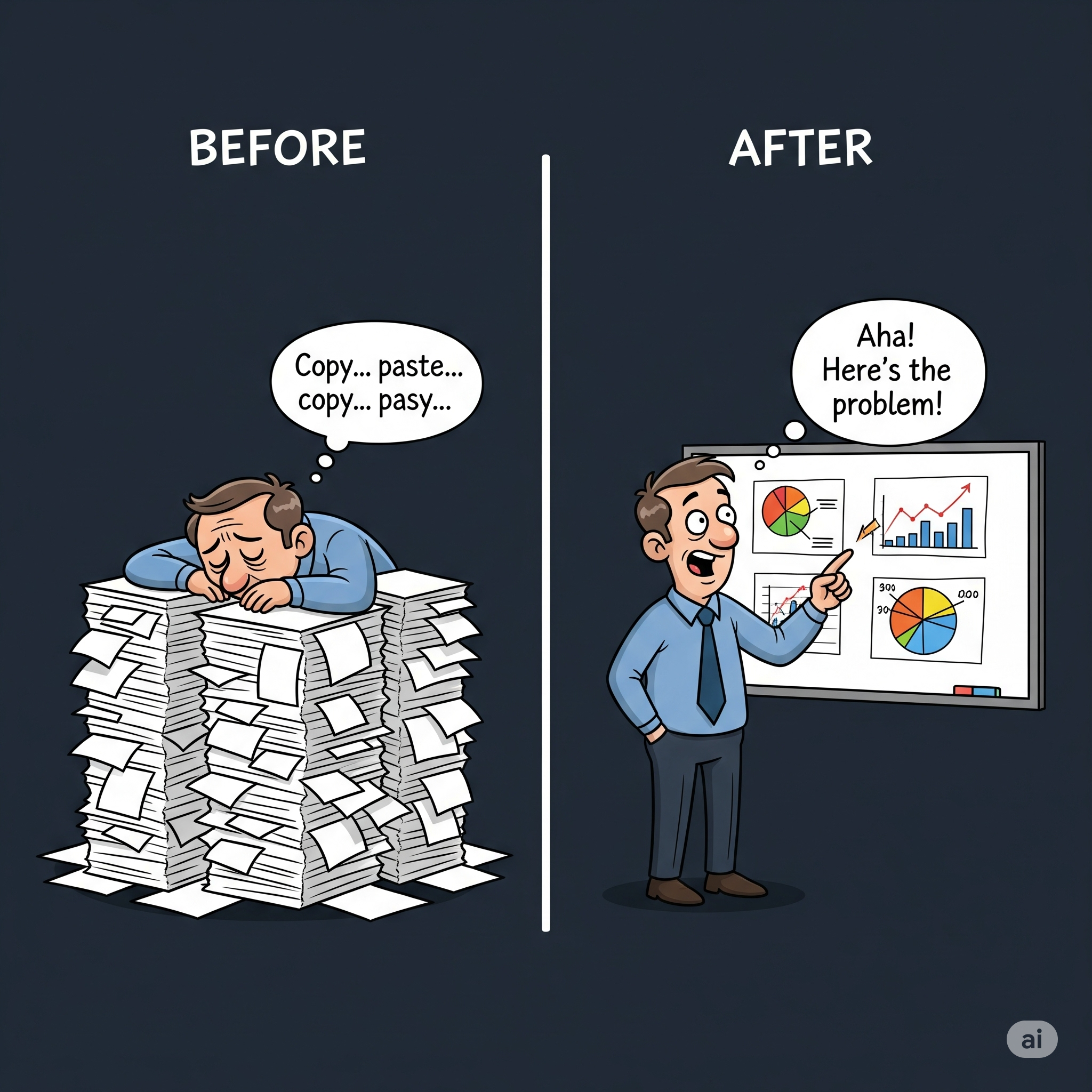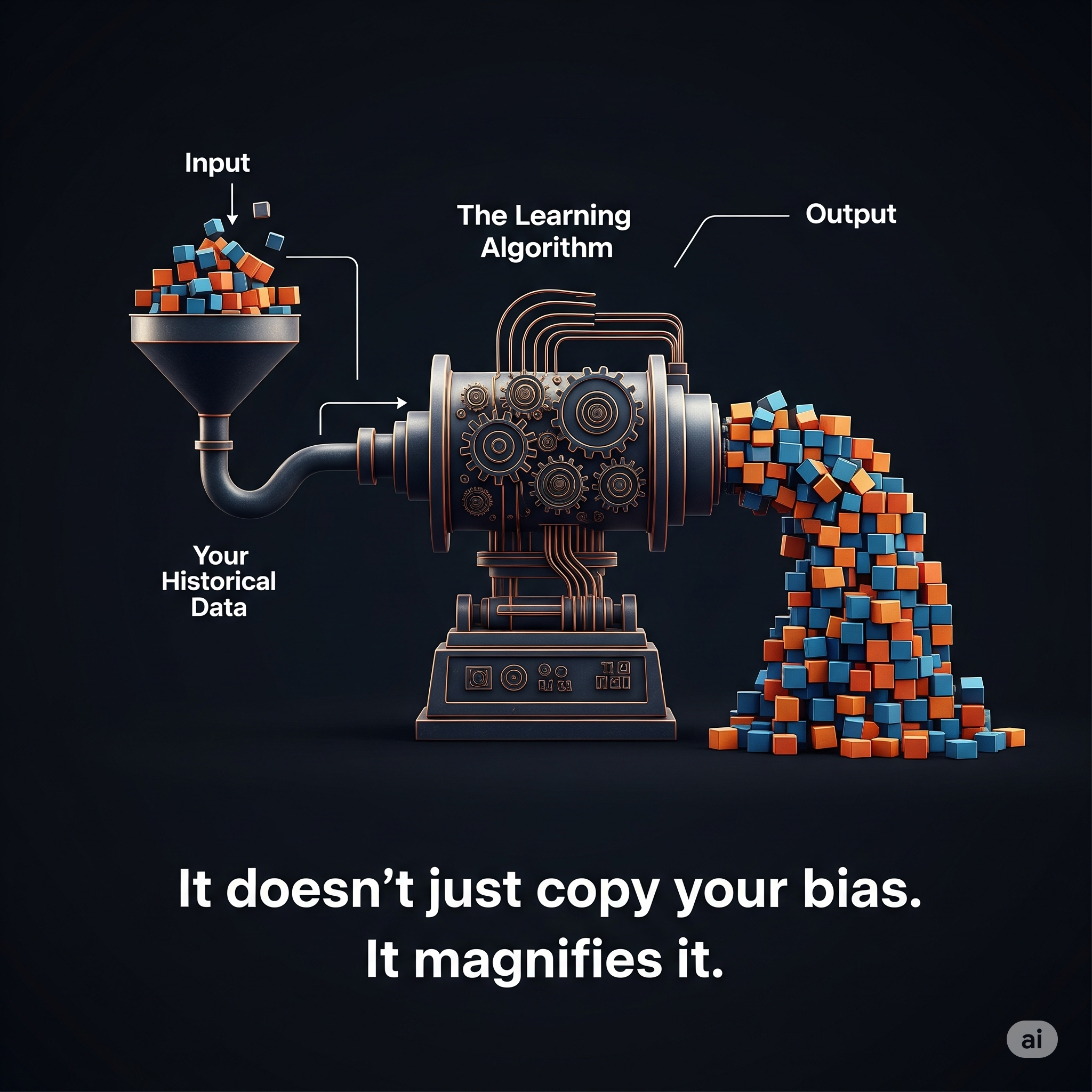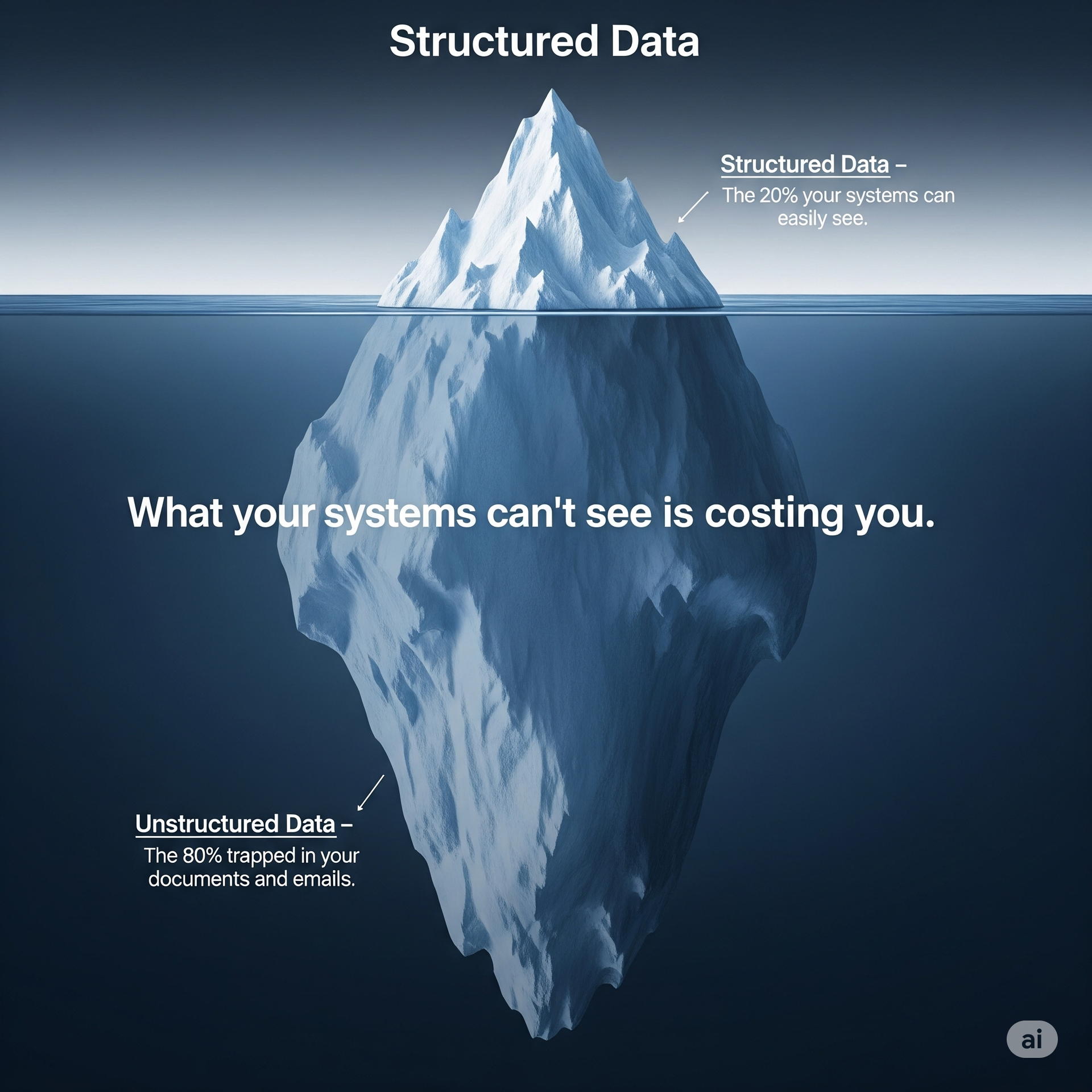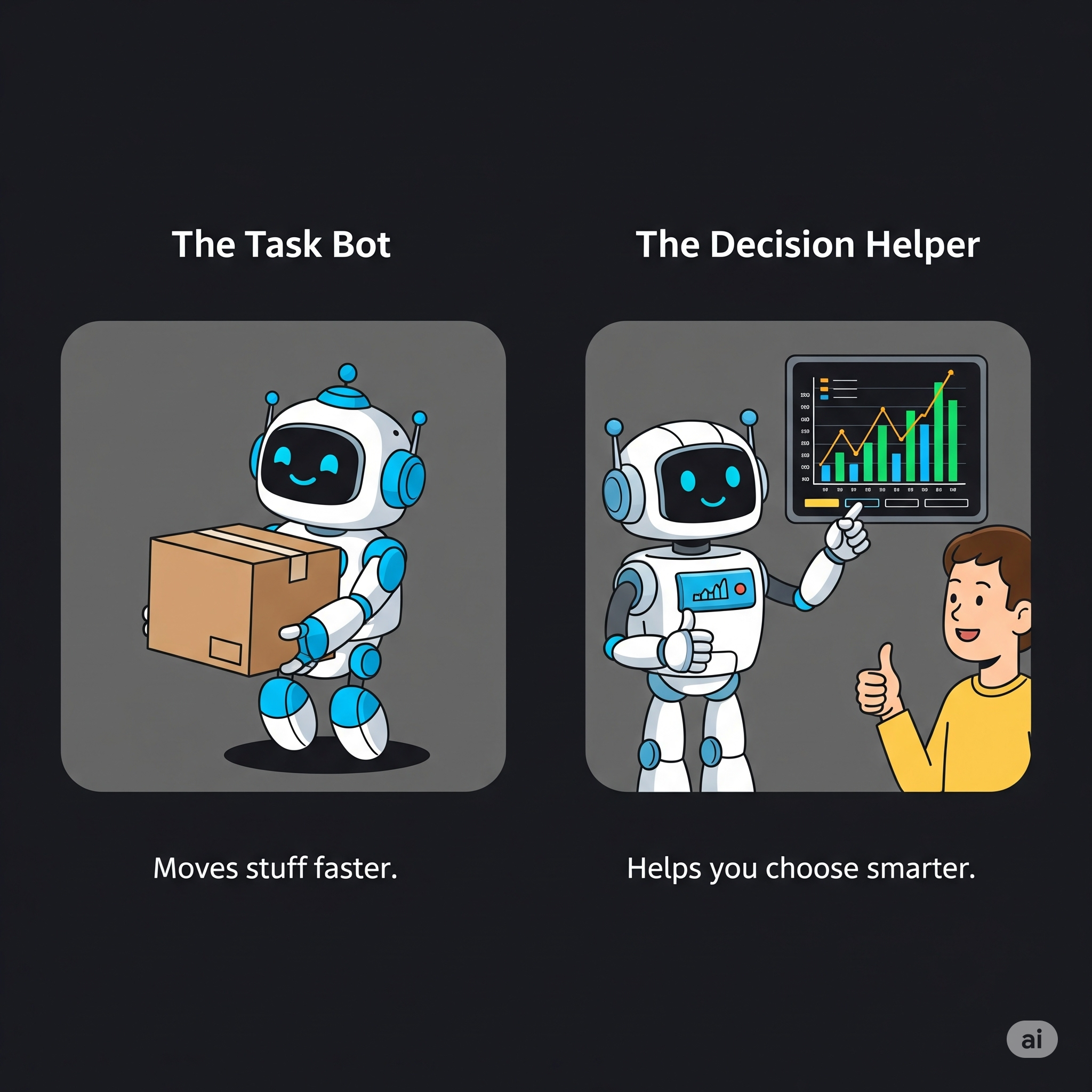I’ve seen it a dozen times. A company spends a fortune on a big, shiny “automation” project. The consultants leave, the checks are cashed, and everyone waits for the magic to happen. Six months later? The project is stuck in the mud, and no one really wants to talk about why.
So let’s talk about it.
The reason your automation is failing probably isn’t the software. It isn’t your people. It’s the paper. Or rather, the endless stream of digital “paper” that runs your company—the invoices, purchase orders, contracts, and forms that come in every conceivable format.
We’ve built our businesses on a foundation of messy, unstructured, and totally unpredictable documents. Then we try to aim a piece of software at it that demands perfect, predictable data. It’s a recipe for disaster.
The Bottleneck We Pretend Isn’t There
Think about your typical automation bot. It’s a creature of habit. It’s been told that the invoice number lives in the top-right corner of the page. It’s happy to grab it from there, all day long.
But then Vendor B sends an invoice where it’s on the bottom-left, labeled “Ref #”. The bot has a meltdown. It can’t find what it’s looking for, so it does the only thing it knows how to do: it gives up. It flags the document and dumps it into a digital slush pile that a poor human has to sort through manually.
Suddenly, you’re not automating work. You’re just creating a new, more complicated way to do the same old data entry. This is the bottleneck. It’s the single point of failure where almost every grand automation plan falls apart.
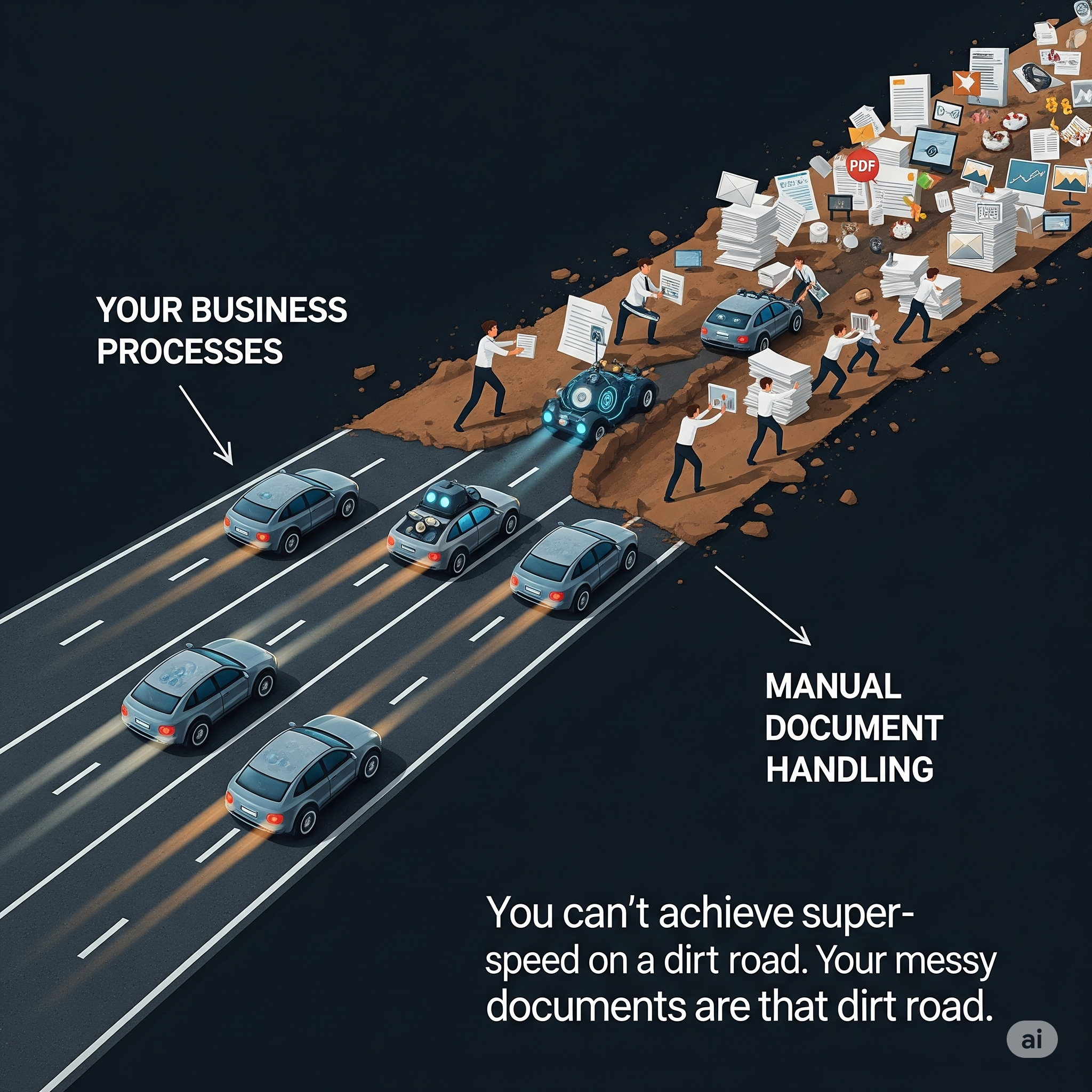
There’s a Better Way, and It’s Not Complicated
So what’s the fix? You don’t need a more complex bot or more developers to write endless “if-then” rules. You just need to stop trying to force the issue. You need a different kind of tool at the very front of the line.
First, get a tool that can actually read.
Instead of a bot that needs a map, you need a tool that can read the signs. That’s what modern document tools like DocExtractor do. You don’t tell it where the invoice number is. It reads the words on the page, sees “Invoice No.”, and figures it out on its own. It’s smart enough to know that “Reference Number” probably means the same thing.
It can handle PDFs, scanned images, and emails. It reads complex tables and even understands the scribbled handwriting in the margins. It’s not magic; it’s just technology that works the way a human brain does. It takes the messy pile of documents and instantly turns it into the clean, organized data your systems needed all along.
Second, plug that clean data into a decision tool.
Once DocExtractor has read the document and handed you clean data, the hard part is over. You can feed that data into the systems you already have.
An invoice comes in. DocExtractor reads it and passes the info—vendor, amount, date—to your accounting software. The software checks it against a purchase order and, if it all matches, lines it up for payment.
Done. No human touch needed for the 95% of documents that are perfectly normal. And for the 5% that are weird? The system sends it to your team, but not as a raw document. It sends it with a note: “Hey, I read this document, but the price doesn’t match the PO. Can you take a look?”

So… What About My Team?
This is where everyone gets nervous. Does this mean you don’t need your people anymore?
No. Absolutely not. It means you finally get to use them for what you hired them for: their brains.
Nobody grows up dreaming of a career in manual data entry. That work is a soul-crushing waste of human potential. When you automate the boring parts, you free up your people to do the valuable work. They become the detectives who investigate the weird invoices. They become the strategists who analyze spending patterns to find savings. They’re the ones who build relationships with vendors and solve the problems that require a real conversation.
You’re not replacing them; you’re upgrading them. You’re giving them a promotion from “human keyboard” to “expert problem-solver.” Honestly, they’ll probably thank you for it.
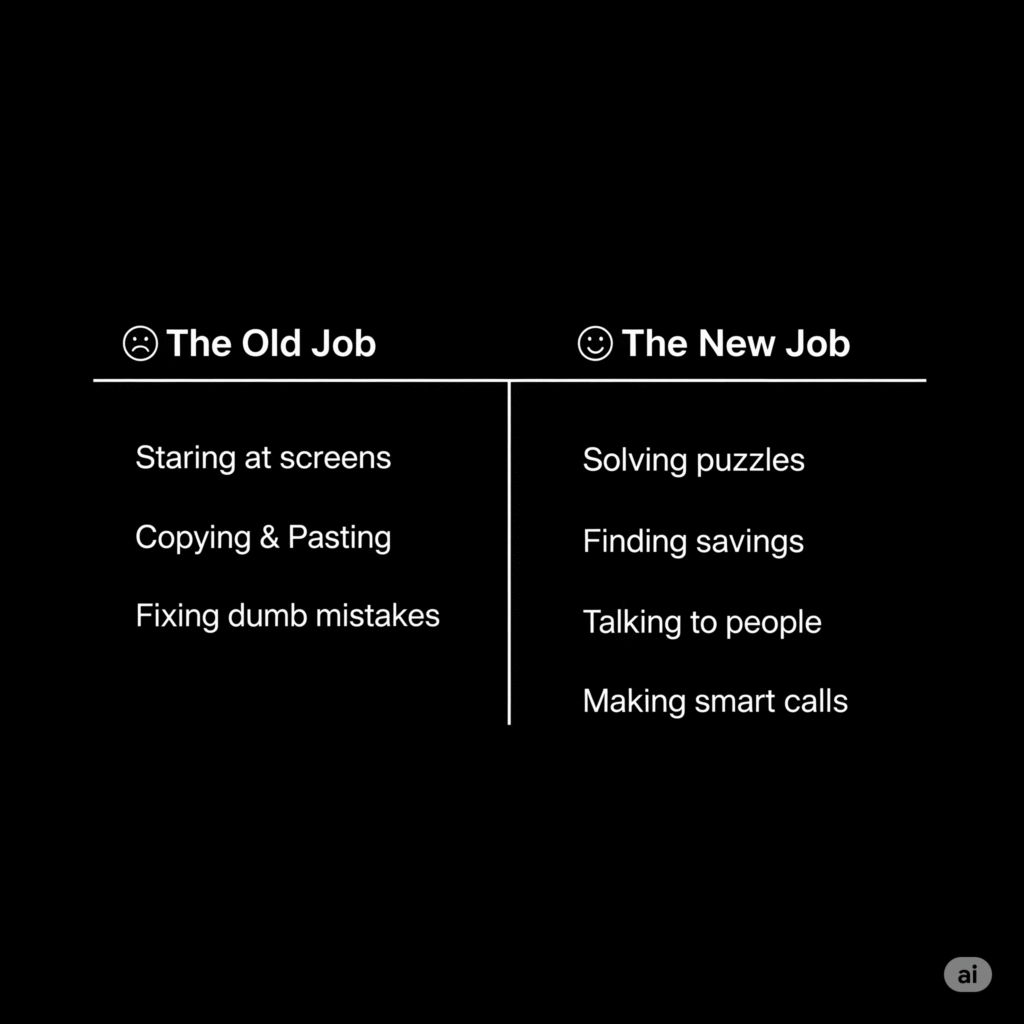
Stop Fixing the Wrong Problem
If your automation efforts feel stuck, take a step back. The problem probably isn’t the final step in the process; it’s the very first one. You’re trying to build a skyscraper on a foundation of quicksand.
Fix the document problem first. Get a smart tool that can read and understand the messy reality of your business. Once you have a reliable stream of clean data, everything else becomes simpler. You’ll spend less time and money on failed projects and more time actually moving your business forward.


